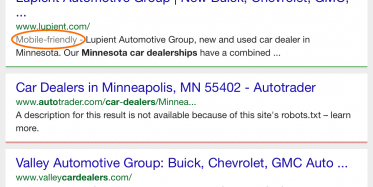Fundraising Checklist for Nonprofit Organizations
There is one thing that every manager should keep in mind: no matter what good deed your organization represents, donators won’t come naturally. Like it or not, when it comes to money, you should consider your organization a product and put effort into attracting buyers. Several for-profit marketing strategies work very well for nonprofit organizations. If your organization has financial difficulties, it’s time to re-evaluate your fundraising activity. Here are some items that you can look into.
1.Your goal is S.M.A.R.T and based on thorough analysis
S.M.A.R.T goals are no longer an exotic concept. The acronym is an abbreviation of Specific, Measurable, Attainable, Relevant and Time-oriented, all characteristics that your goal should possess. In the context of nonprofit organizations, let’s look at an internal email sent by Amanda. Amanda is in charge of her organization’s campaign to raise funds for annual activities.
Dear All,
Here comes another year of serving meals to people in need! Hope that you are all as excited as I am. Our campaign this year goes official from March 2nd to May 2nd, aiming at a figure of $97,000 or 30,000 free meals.
Our hard work last year has paid off with $90,000. As the goal this year is more aggressive, I expect that our team can continue working at best! Though the details plan is to be finalized by the end of next week, I can’t wait to share this news to you all.
Thanks and best regards,
Amanda
Is Amanda’s goal specific? Apparently, $97,000.
Is it measurable? Yes, the number validates itself by the end of the campaign.
Is it attainable? Not enough information to conclude. Amanda sets a more ambitious goal, but we do not know if she considers all internal and external factors.
Is it relevant? Yes, by raising $97,000, they will be able to provide 30,000 meals.
Is it time-oriented? Yes, the team has two months from March 2nd to May 2nd to make it happen.
Amanda’s email is a pretty good illustration of goal setting. Her goal fulfills four out of five criteria (specific, measurable, relevant and time-oriented). The remaining item of “attainable” is the trickiest to achieve. To avoid either under-aim or over-aim, we need data on the targeted “market.” If you have sufficient budget to do research, awesome! Unfortunately, that is usually not the case. Thus, explore all resources that you have. Don’t leave out any potential organization or generous individual. Reach them via your current network, look out for information on local radio and newspapers. At the end of the day, sum up all available information and decide on a plausible target for your campaign.
For instance, it is time-consuming to contact every name on your outdated yellow book. However, these thick books can be used to identify the highs and lows of a business line, or which line of business is more likely to give away. If the list is much shorter than it was last year, those are organizations you can sidestep. On the other hand, if there are businesses that have been in the book for years, you should ask for their help.
2.You team up with volunteers
Recruiting volunteers is a great upgrade for your organization. Volunteers bring in ideas, skills and connections. The quality and quantity of volunteers also boosts credibility and influence of a campaign. Obama would have struggled to become president without his 2.2 million volunteers. Those volunteers are the face (the representative) and the voice of your campaign. Why would you buy cookies from a certain girl scout? Perhaps you heard some good reviews from your colleagues or simply because that girl scout is the daughter of your favorite neighbor. Even if volunteers are not working with you long-term, their positive testimonials play a crucial role in attracting the next generation of volunteers and donators.
Also, technological advances make it easier to recruit volunteers regardless of geographical distance. You can either look for candidates on your own website/fan page or post an announcement on job boards (Devex.com, Reliefweb.int, Idealist.org). If you have a young organization, it’s plausible to use a free third-party website. But overall, having a customized website enables complete control over your content, layout of information and online visitor discussions.
3.Your organization differentiates with value
Make your mission the headline in every campaign. Remember Fight Club and its first two rules? “You do not talk about fight club.” Yet it stills spreads like a disease. The club, apparently a nonprofit organization, can deliver such amazing value that it does not need any branding effort to grow.
It’s unjustified to compare real life and a Hollywood movie, but you can’t expect others to entrust their resources to your organization if they don’t like what you represent. If your organization is trying to serve free meals for people in need, remember to tell the stories of why and how you started. Make your value proposition original and take every opportunity to boast about it, online and offline. One way to magnify your value proposition is via a thought leader who has active influence on your targeted audiences. Find the alpha wolf, persuade her/him and enjoy the support of the whole pack.
4.Your messages are delivered effectively
When it comes to money, every word carries extra weight. The art of asking for donations is being aggressive yet tactful at the same time. Popular phenomena that may prevent you from achieving your donation goal include anchoring and social proof. While anchoring describes the state of being attracted to the first piece of information that pops up in a list, social proof describes the behavior of following the majority. To illustrate, on his blog called Neuromarketing, Roger Dooley pointed out two mistakes made by Wikipedia, one of the largest NGOs in its funding campaign. With the slogan “the price of a cup of coffee is all we need,” Wikipedia tries to raise $3 from each reader:
We’re sustained by donations averaging about $15. Only a tiny portion of our readers give. If everyone reading this right now gives out $3, our fundraiser would be done within an hour.
By stating “only a tiny portion,” Wikipedia eases the freeloaders from shame. It’s more acceptable if you are among the larger proportion of non–donators. To avoid this consequence of social proof, the better way is to focus on positive figures. For example, even if only 1% of more than 29 million users of Wikipedia donated, they should phrase the sentence as “Join our 290,000 Wikipedia donators”
Moreover, the two figures given by Wikipedia ($15 and $3) set a low anchor for donators. Now that the average is $15, a donation of $20 – $25 can be considered generous. Experienced fundraisers will set a high anchor first. Even if donators don’t take the first/highest suggestion, they will feel more comfortable with subsequent amount and tend to donate more.
Wikipedia is stuck in a state of low numbers of small donations, which could be solved simply with better wording.
5.Your organization communicates using collaborated mediums
The synchronization of both online and offline communication plays a crucial role in the success of your campaign. Fundraising workshops and events need support from strong media coverage. With a limited budget, it is better to focus your resources on certain channels.
Just take a look at digital marketing and you have plenty of affordable, yet effective, options. A Facebook Page is a free platform to connect with millions of regular users. Facebook is most suitable for compressed messages; thus your content is shared more easily. Facebook users also seek prompt interaction, which makes it harder to manage all discussions. To offset this, it is quick and simple to establish and run a fan page on Facebook.
On the other hand, building your own website is more of a sustainable investment. A website is the optimal tool to present rich content in an organized and unique way. Building a website is building a new source of data and income. Although you can also analyze audience statistics on Facebook, generating revenue via ads and sponsors is a special website feature. The major issue is that hardly anyone can set up and manage a website without professional assistance.
So, it is recommended to take steps when building your digital communicator. If you offer short and sweet notes and aim to build a community of followers, take off with Facebook and expand with a website. If you prefer to deliver informative and customized messages with different topics, build a website and then boost it with your fan page on Facebook.
To sum up, these are five things you should review on your fundraising campaign: S.M.A.R.T. goals, a strong team of volunteers, distinctive value, effective message delivery and collaborated communication. And to keep up the performance, regularly update your approach instead of using an instant and lazy formula years over years. Changing environment, technological advances and especially circulating economies force campaign managers to be creative and adaptive. Look at the girl scouts. They sell lemonade in summer and cookies in winter. Your funding approach should be audited and optimized periodically.
Last but not least, although you are asking for money, make it clear on every communication channel that you aren’t doing it for profit. People may find it ridiculous to donate if your messengers are driving a Lexus! Balance between your mission and your need. The money will come more consistently. Hope you find this article helpful, if you do please share it with other nonprofits so they can benefit from it as well. Thank you!














